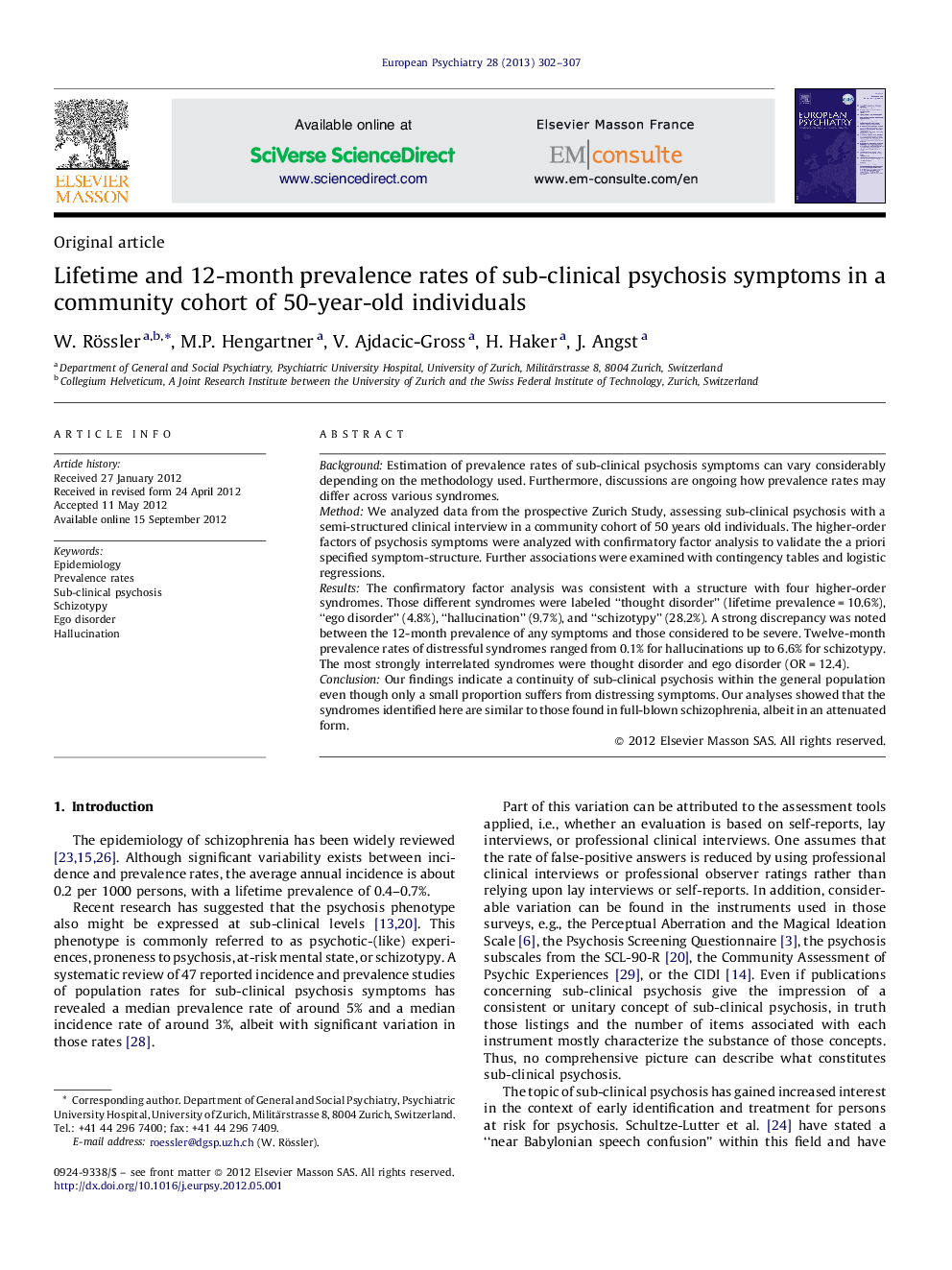| Article ID | Journal | Published Year | Pages | File Type |
|---|---|---|---|---|
| 6229357 | European Psychiatry | 2013 | 6 Pages |
BackgroundEstimation of prevalence rates of sub-clinical psychosis symptoms can vary considerably depending on the methodology used. Furthermore, discussions are ongoing how prevalence rates may differ across various syndromes.MethodWe analyzed data from the prospective Zurich Study, assessing sub-clinical psychosis with a semi-structured clinical interview in a community cohort of 50 years old individuals. The higher-order factors of psychosis symptoms were analyzed with confirmatory factor analysis to validate the a priori specified symptom-structure. Further associations were examined with contingency tables and logistic regressions.ResultsThe confirmatory factor analysis was consistent with a structure with four higher-order syndromes. Those different syndromes were labeled “thought disorder” (lifetime prevalence = 10.6%), “ego disorder” (4.8%), “hallucination” (9.7%), and “schizotypy” (28.2%). A strong discrepancy was noted between the 12-month prevalence of any symptoms and those considered to be severe. Twelve-month prevalence rates of distressful syndromes ranged from 0.1% for hallucinations up to 6.6% for schizotypy. The most strongly interrelated syndromes were thought disorder and ego disorder (OR = 12.4).ConclusionOur findings indicate a continuity of sub-clinical psychosis within the general population even though only a small proportion suffers from distressing symptoms. Our analyses showed that the syndromes identified here are similar to those found in full-blown schizophrenia, albeit in an attenuated form.
